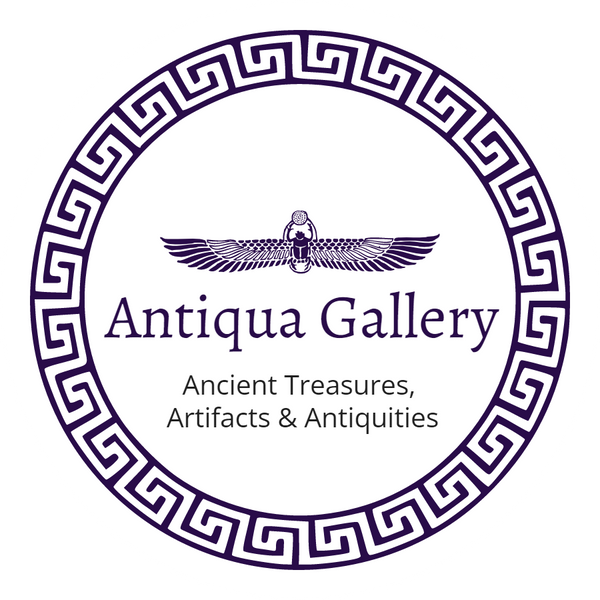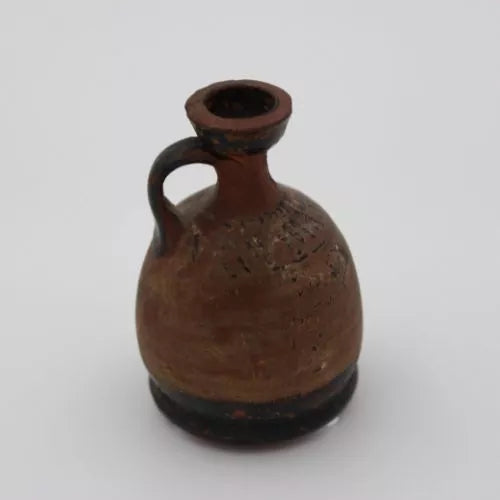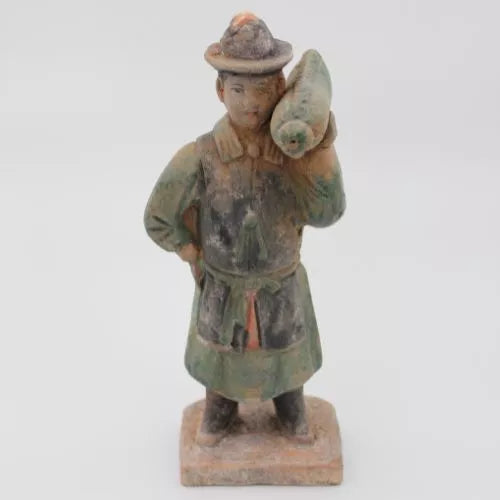Around the third millenium BC began the production of small glass pieces in Mesopotamia. This meant mostly, small pieces of jewelry and other small objects with colored glass. Slowly, as development of technique and methods progressed, glassmakers could use moulds to create entire objects made just of glass.

Core-Forming Glass Technique
Around the 16th century BC in Mesopotamia, the first glass vessels were created, using the Core-forming glass technique. With this technique the maker would take strands of glass around the clay-mould and in that way create the shape of the glass piece. The objects made with this technique were usually smaller, for example containers for oils, perfumes etc.
Around the 9th century BC the method arrived in the Mediterranean and around the 6th and 4th century BC, the glass making industry increased substantially in this area. The greek glass is characterized by the greek pottery art, such as amphoras.
Cast Glass Technique
Around the 15th century BC, another technique was invented, also in the Mesopotamian area. The cast glass technique was used for open-ware glass objects. The glass was cast upon a mould and then afterwards the maker would add strands of glass for more complex and detailed decorations.
This technique became very popular, and more so than the core-forming technique around the 3rd century BC.
Blown Glass
The blowing method of creating glass was by far the greatest development in the world of glass manufacturing, and it still used to this very day. It was invented around the 1 century BC and origins from the Graeco-Roman civilization. It gave way to many more creative forms and shapes, and a much larger degree of complexity compared to the amount of time it required. This also meant it became cheaper and therefore around the 1 century AD, glass had become a household item.
Color-band & Splashed Glass
Almost right after the blown method of producing glass was invented, a lot of new experimentation occured. By adding strands of glass to the gob of partly inflated glass, the artisans could create a larger range of beautiful effects. The color-band has received its name due to the marble-looking surface and the bands of differently colored glass that stretches around the glass vessel. This method was mostly used on perfume containers.
The Splashed glass method was achieved by sprinkling glass upon the gob of partly inflated glass - giving it a mosaic-ish look. This was most popular with smaller vessels, such as glass bottles and drinking cups almost exclusively around the first century AD.
Mould-blown Glass
The Mould-blown glass technique started appearing in the first century AD, and was done by blowing the gob of glass and then closing it wihtin a mould. This would quickly and efficiently create the shape, and impress the intricate patterns and details in the vessel. This method became highly popular.
Cut Glass
The greatest glass artisans would cut the glass and engrave decorative motifs and geometric patterns. This gained in popularity between the first and fourth century AD.
Glass with Trailed Decoration
The trailed kind of decoration origins from the very beginnings of the core-forming technique.The glassmakers would rather frequently apply trails of glass in different zig-zag patterns. These trails were usually done by marvering. As the core-forming method was replaced by the other methods, such as the blown technique the use of trailed decorations decreased. Instead artisans used molded or cut decorations.
I hope you enjoyed my post about ancient glass!
Best Wishes, Theodor











